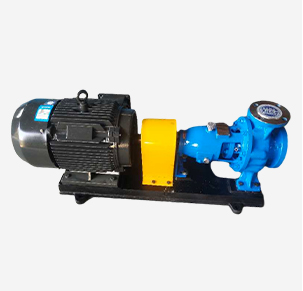Corsican
- Afrikaans
- Albanian
- Amharic
- Arabic
- Armenian
- Azerbaijani
- Basque
- Belarusian
- Bengali
- Bosnian
- Bulgarian
- Catalan
- Cebuano
- Corsican
- Croatian
- Czech
- Danish
- Dutch
- English
- Esperanto
- Estonian
- Finnish
- French
- Frisian
- Galician
- Georgian
- German
- Greek
- Gujarati
- Haitian Creole
- hausa
- hawaiian
- Hebrew
- Hindi
- Miao
- Hungarian
- Icelandic
- igbo
- Indonesian
- irish
- Italian
- Japanese
- Javanese
- Kannada
- kazakh
- Khmer
- Rwandese
- Korean
- Kurdish
- Kyrgyz
- Lao
- Latin
- Latvian
- Lithuanian
- Luxembourgish
- Macedonian
- Malgashi
- Malay
- Malayalam
- Maltese
- Maori
- Marathi
- Mongolian
- Myanmar
- Nepali
- Norwegian
- Norwegian
- Occitan
- Pashto
- Persian
- Polish
- Portuguese
- Punjabi
- Romanian
- Russian
- Samoan
- Scottish Gaelic
- Serbian
- Sesotho
- Shona
- Sindhi
- Sinhala
- Slovak
- Slovenian
- Somali
- Spanish
- Sundanese
- Swahili
- Swedish
- Tagalog
- Tajik
- Tamil
- Tatar
- Telugu
- Thai
- Turkish
- Turkmen
- Ukrainian
- Urdu
- Uighur
- Uzbek
- Vietnamese
- Welsh
- Bantu
- Yiddish
- Yoruba
- Zulu
Telephone: +86 13120555503
Email: frank@cypump.com
Nov . 28, 2024 01:02 Back to list
Understanding the Function and Maintenance of Sewage Ejector Tanks
Understanding Sewage Ejector Tanks Essential Components of Wastewater Management
In modern plumbing and wastewater management systems, sewage ejector tanks play a crucial role, especially in homes and buildings that are situated below the main sewage line. These tanks are vital for facilitating the proper disposal of wastewater, ensuring sanitary conditions, and preventing environmental contamination. In this article, we will explore the function, construction, advantages, and maintenance necessities of sewage ejector tanks.
What is a Sewage Ejector Tank?
A sewage ejector tank is a submersible pumping system designed to handle sewage and wastewater that cannot flow into the existing sewer lines due to gravity. These tanks are typically buried underground and are equipped with a pump that automatically activates when the wastewater level reaches a certain point. The pump then ejects the sewage upwards and into the main sewer line, allowing for efficient waste management.
Construction and Components
Sewage ejector tanks are constructed from durable materials such as polyethylene, fiberglass, or reinforced concrete to withstand the corrosive nature of sewage. A typical tank consists of several key components
1. Tank Body The primary structure that holds the wastewater and houses the pump. 2. Pump The heart of the ejector system, this device moves the sewage from a lower elevation to a higher one.
3. Float Switch This mechanism detects the water level in the tank. When the water rises to a predetermined level, the float switch activates the pump.
4. Inlet and Outlet Pipes These pipes connect the tank to the home's plumbing system and the municipal sewage system, respectively.
5. Discharge Valve This prevents backflow of sewage into the tank after it has been pumped out.
Advantages of Sewage Ejector Tanks
The primary advantage of sewage ejector tanks is their ability to efficiently transport wastewater from lower areas to higher elevations, thus ensuring that properties below the sewer line can still access municipal sewage services. Additionally, these tanks
- Enhance Sanitation By properly managing wastewater, ejector tanks help prevent sewage backflow and contamination of local water sources.
sewage ejector tank

- Reduce Odors A sealed system minimizes unpleasant odors that often accompany sewer systems.
- Minimize Flood Risks By preventing wastewater accumulation in basements or lower-level areas, ejector tanks reduce the risk of flooding and water damage.
- Support Multi-Story Homes For buildings with multiple levels, ejector tanks provide essential support for draining wastewater from upper floors.
Maintenance of Sewage Ejector Tanks
Regular maintenance of sewage ejector tanks is crucial for ensuring their efficient operation and longevity. Here are some essential tips for maintaining these systems
1. Regular Inspections Homeowners should inspect the tank at least once a year for signs of wear, tear, and blockages.
2. Check the Pump Test the pump periodically to ensure it activates correctly with the float switch and that it can handle the pressure of ejecting waste.
3. Clean the Tank Sludge can build up over time, requiring the tank to be emptied and cleaned by professionals to ensure it functions optimally.
4. Avoid Disposal of Non-Biodegradable Items Homeowners should be cautious about what goes down the drain. Items like wipes, feminine hygiene products, and grease can cause serious clogs.
5. Monitor for Unpleasant Odors Any sudden increase in odors near the tank could indicate a malfunction or blockage, necessitating immediate attention.
Conclusion
Sewage ejector tanks are indispensable for maintaining effective wastewater management in low-lying areas. Understanding how these systems work and performing regular maintenance can prevent costly repairs and health hazards associated with sewage issues. By appreciating the importance of sewage ejector tanks, homeowners can ensure a safe and healthy living environment while contributing to the overarching efforts of effective wastewater management.
-
High-Performance Air Pumps for Sand & Gravel | Efficient Transport
NewsAug.03,2025
-
ISG Series Vertical Pipeline Pump - Chi Yuan Pumps Co., LTD.|Energy Efficiency, Corrosion Resistance
NewsAug.03,2025
-
ISG Series Pipeline Pump - Chi Yuan Pumps | Energy Efficiency&Compact Design
NewsAug.03,2025
-
ISG Series Vertical Pipeline Pump - Chi Yuan Pumps Co., LTD.|High Efficiency, Low Noise, Durable
NewsAug.02,2025
-
ISG Series Vertical Pipeline Pump - Chi Yuan Pumps | High Efficiency, Low Noise
NewsAug.02,2025
-
ISG Series Vertical Pipeline Pump- Chi Yuan Pumps Co., LTD.|High Efficiency&Compact Design
NewsAug.02,2025










